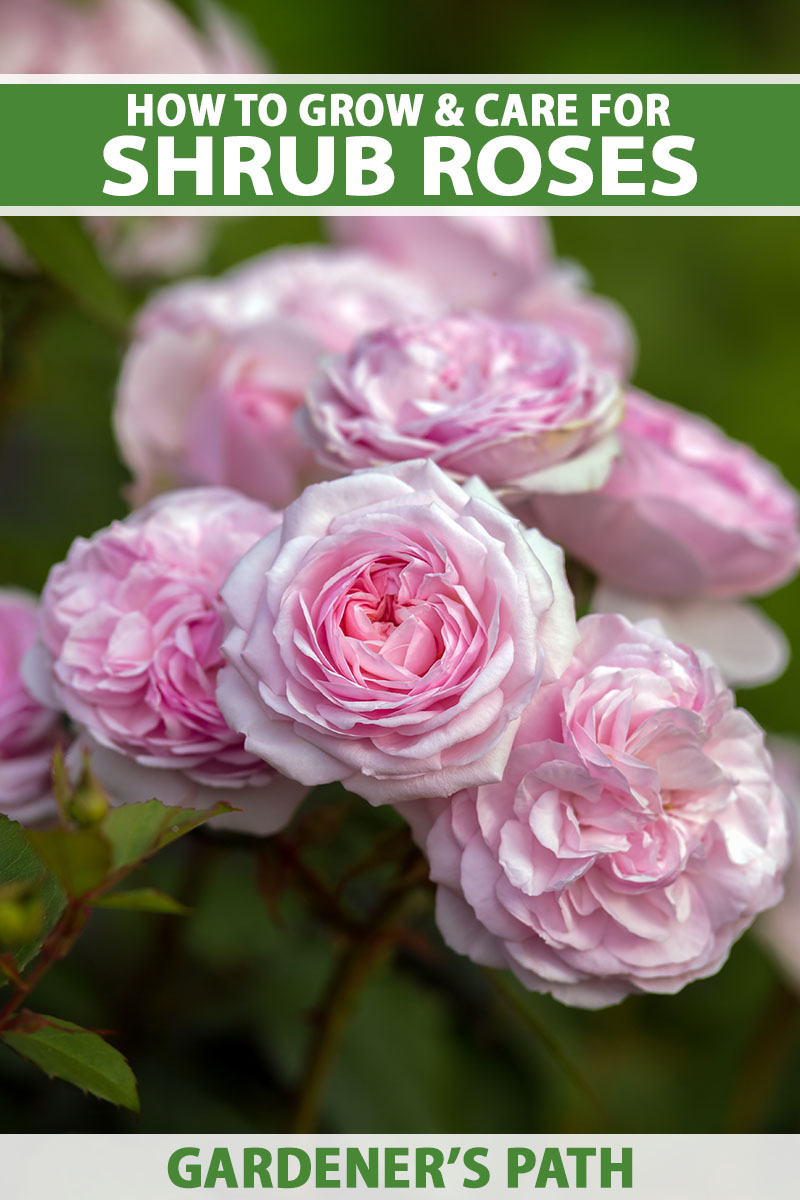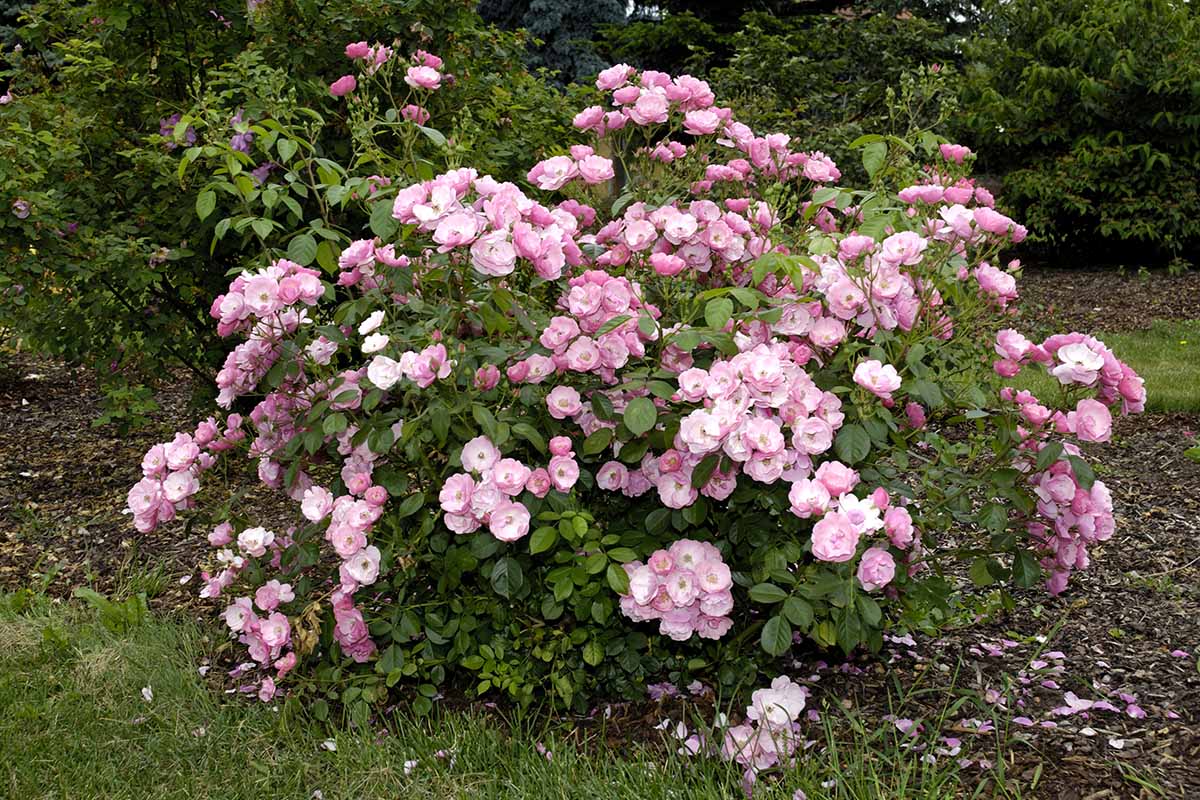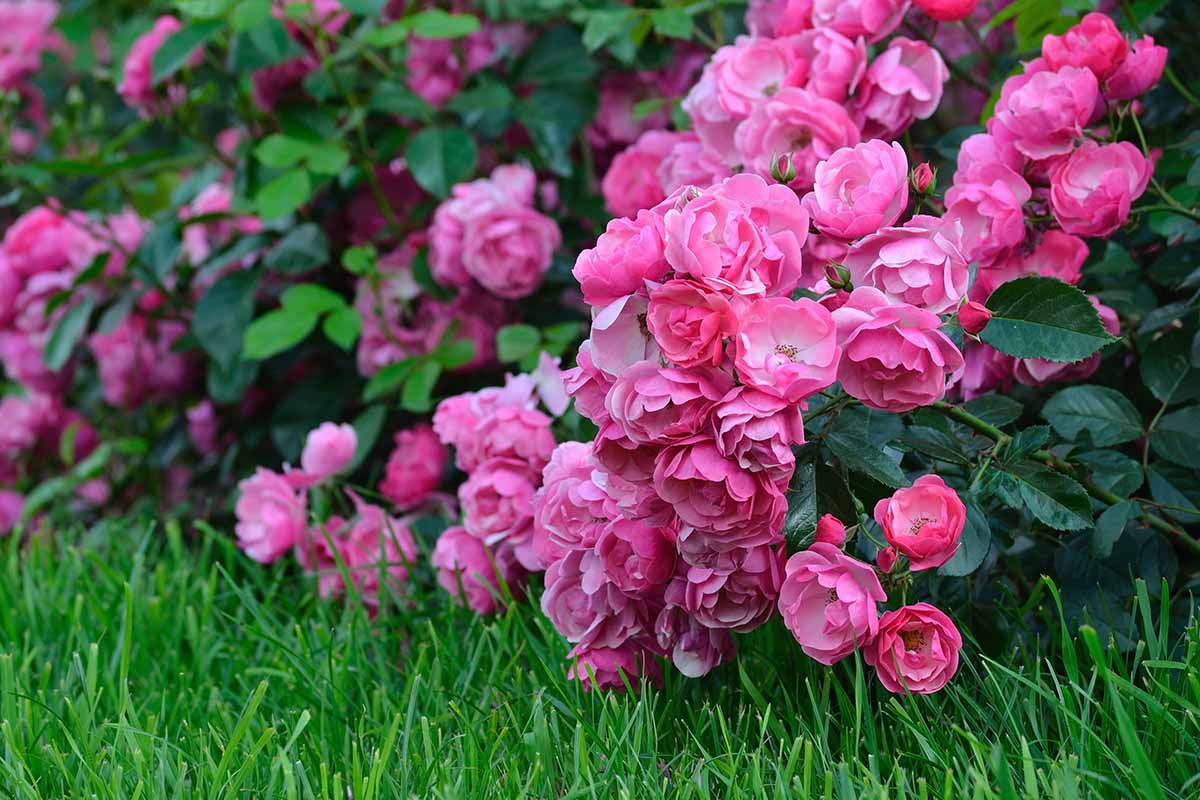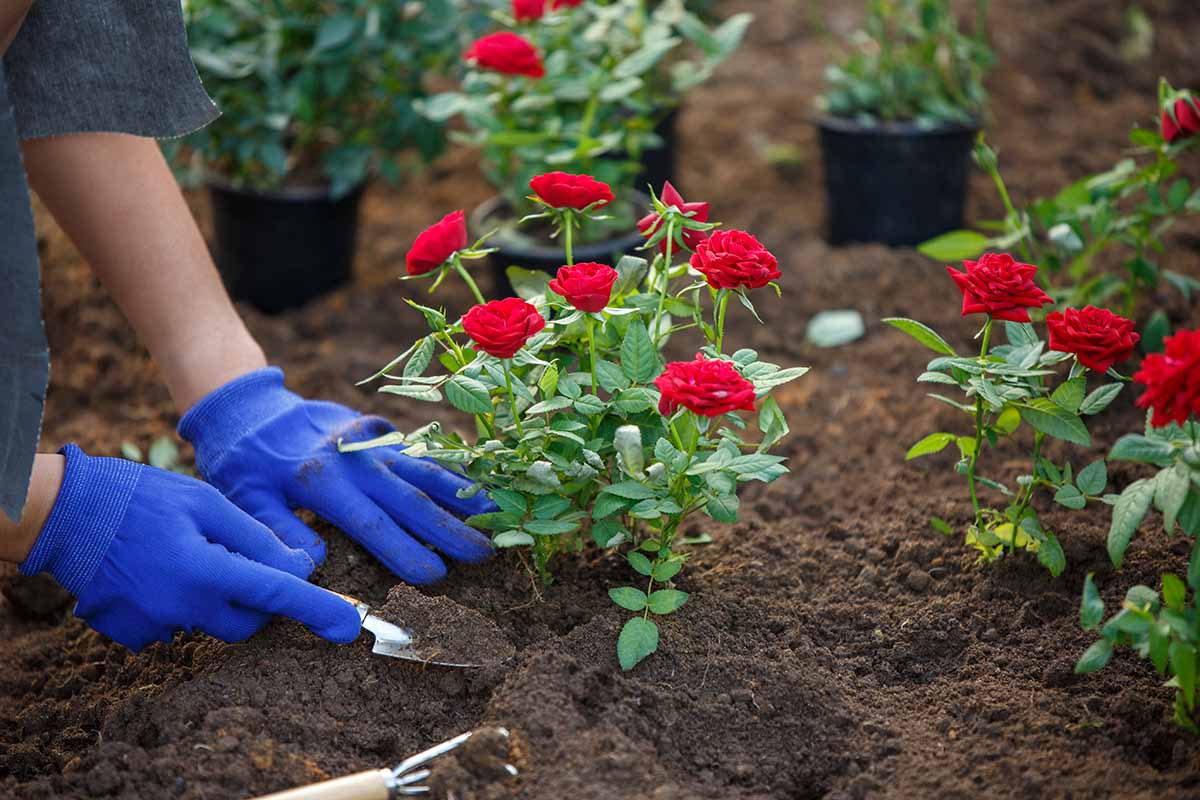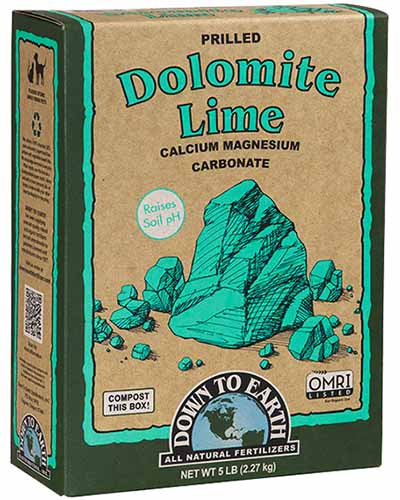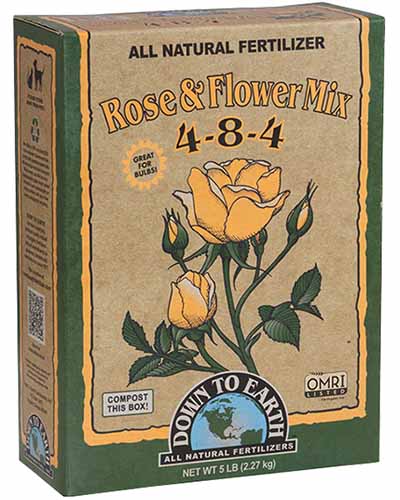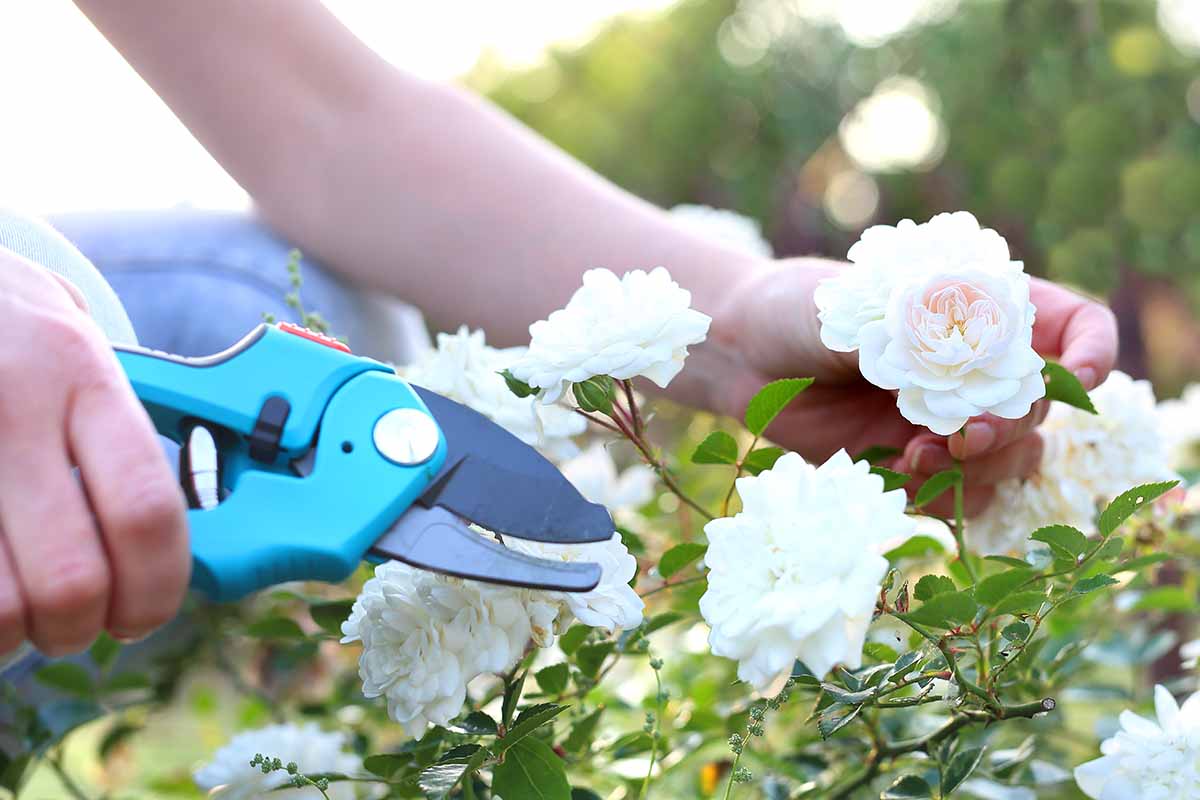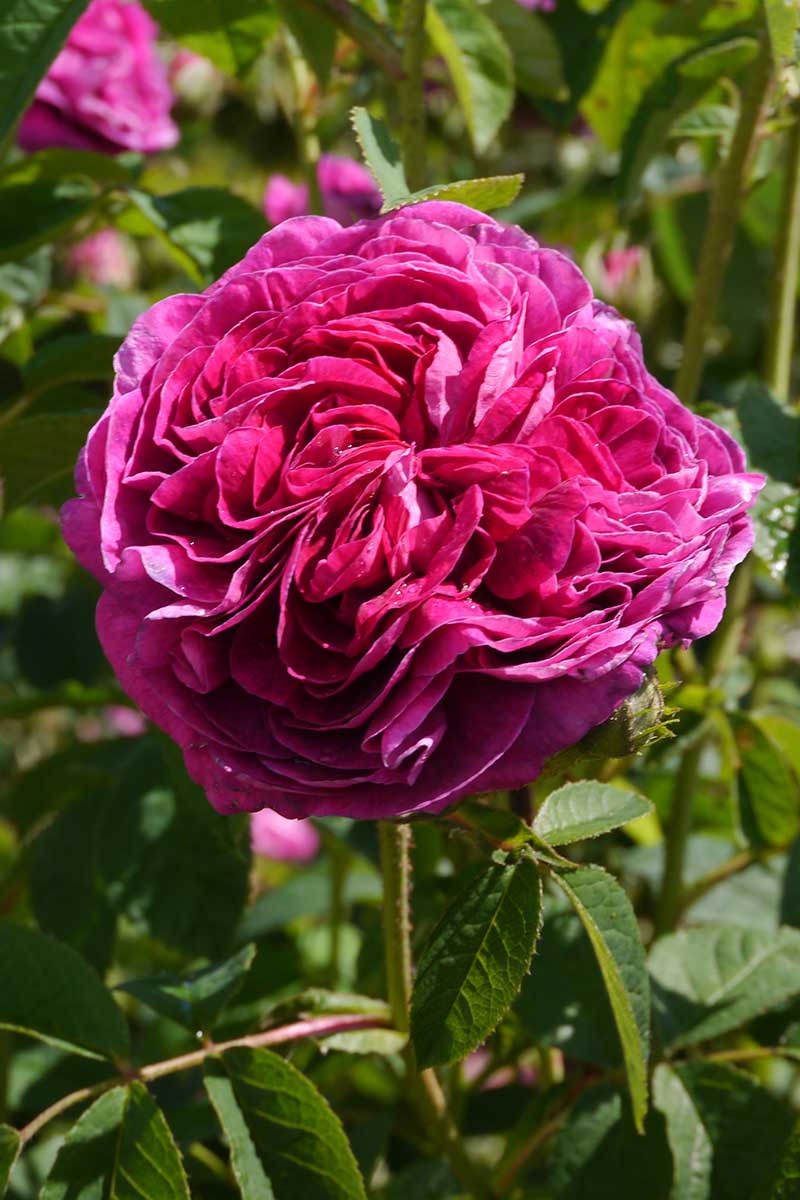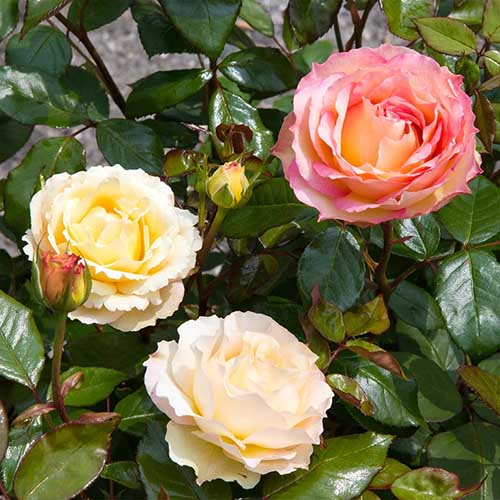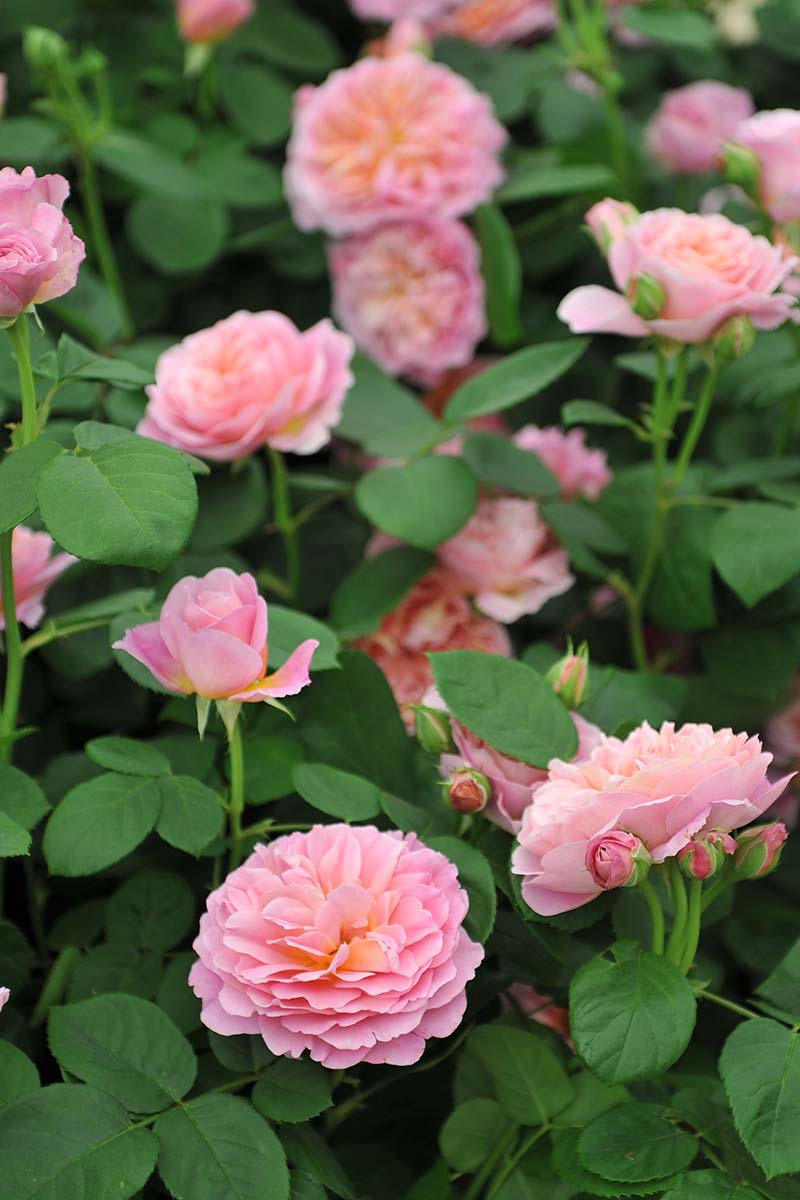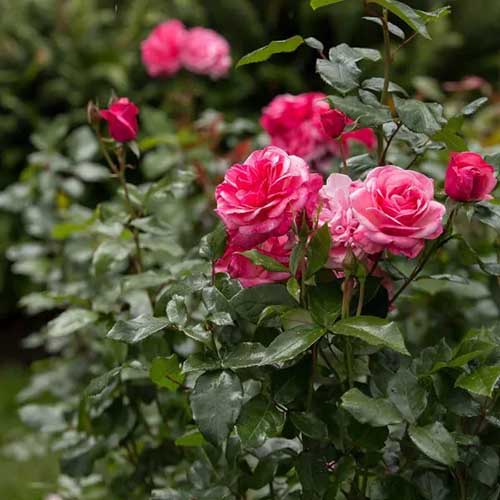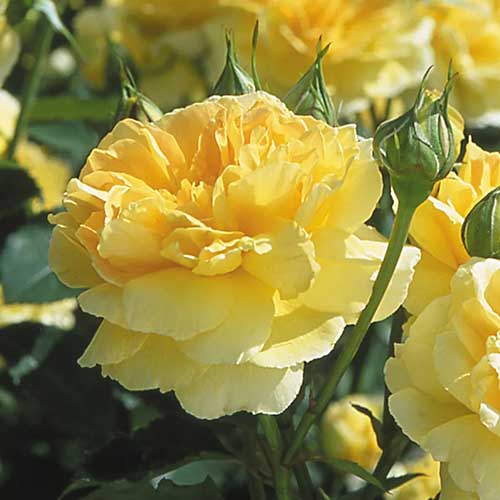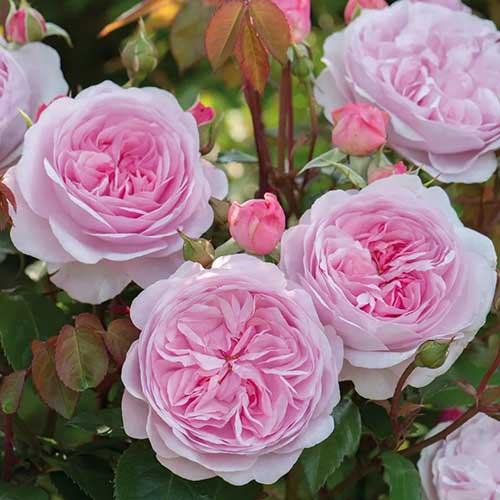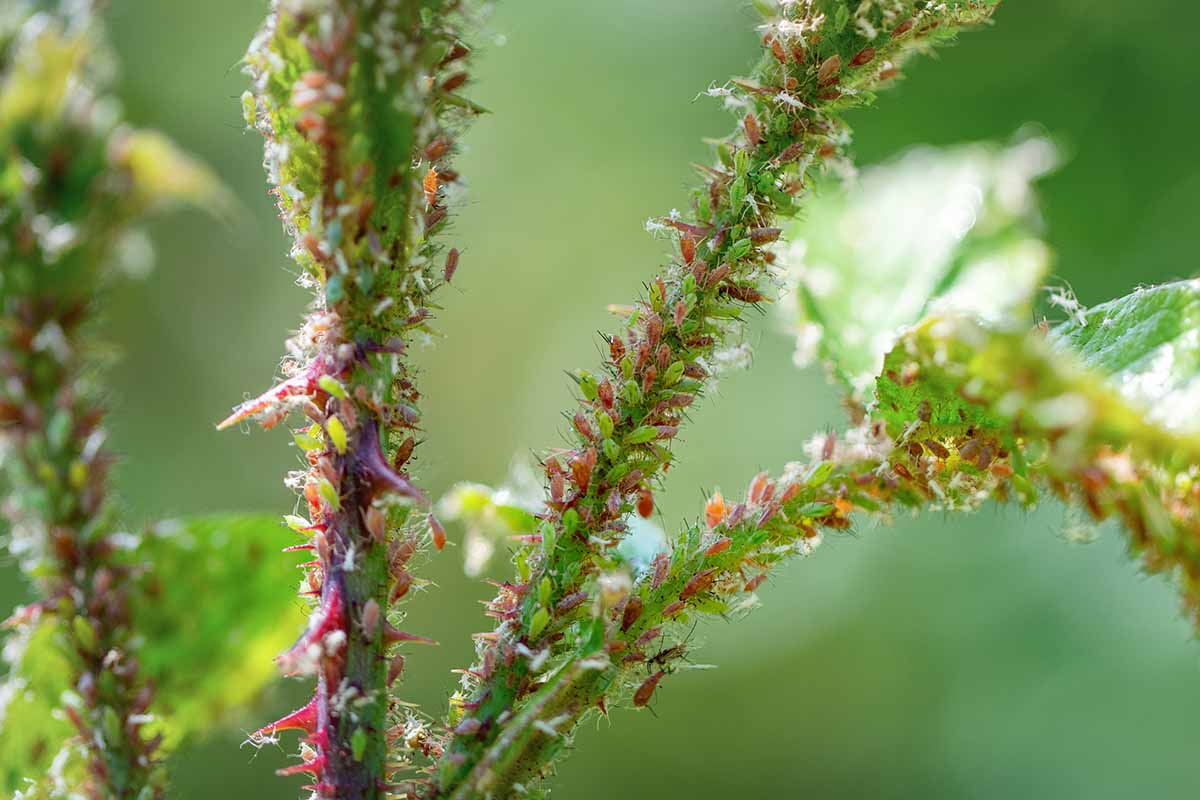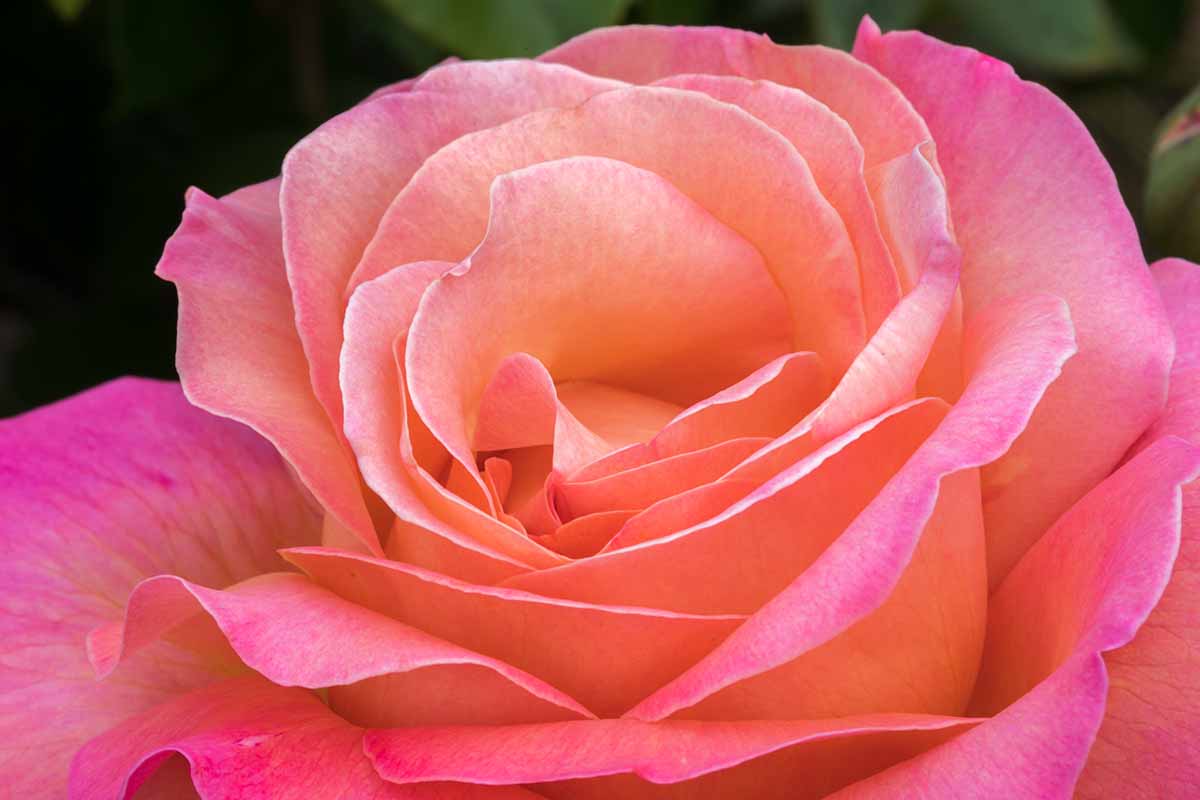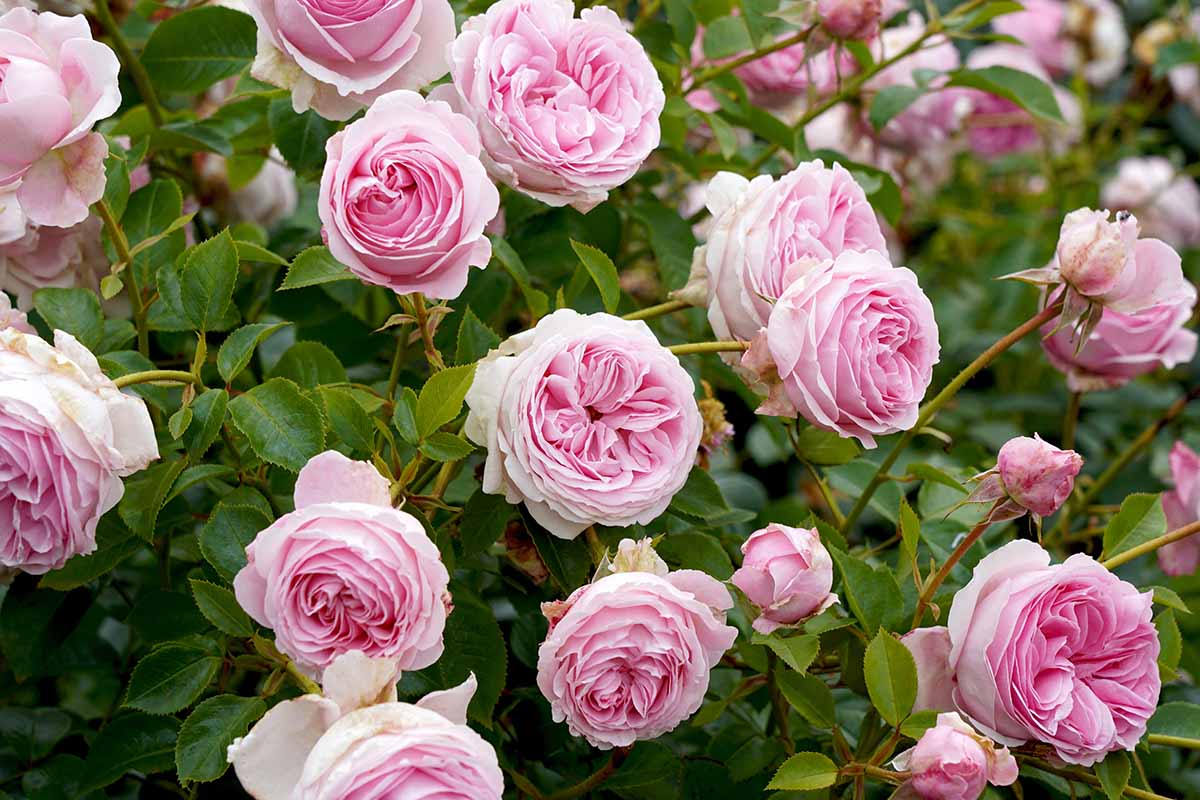They’re easy to handle because they don’t need as much pruning as other types. And they’re also disease-resistant, vigorous growers. We link to vendors to help you find relevant products. If you buy from one of our links, we may earn a commission. Sounds good, right? But what on earth is a shrub rose? And how does caring for one differ from what’s required to tend to other types of roses? How do you know whether the type you’ve picked is really one? These are good questions! We’ll cover all this and more, coming right up. Here’s a quick preview of all that’s ahead: You can’t go wrong with shrub roses. They’re the easiest to grow of all the Rosa options out there. Pull out your shovel, we’re about to dig in.
What Are Shrub Roses?
First, we need to clarify our terms a bit. That’s because the term “shrub rose” can mean two different things, depending on who you are talking to. A “shrub” might just mean a plant that has a shrub-like growth habit. Typically, this is what people mean when they talk about shrub roses, referring to a rose that doesn’t have a climbing or ground-cover-like habit. Some people also use this as a term to describe any rose that is easy to care for, blooms well, and resists disease – regardless of its growth habit. On the other hand, if you’re talking to a rosarian, a shrub is a specific classification defined by the American Rose Society (ARS), which oversees these things. They classify shrub roses under the “Modern” category, and these are further classified as either classic shrubs (like hybrid musks, hybrid rugosas, and hybrid moyesiis) or as modern shrubs (such as Knock Out or David Austin roses). When breeders create a new rose and register it with the ARS, they can choose what category to put their new creation in. Sometimes, if a plant simply doesn’t fit into any other category, they just decide to toss it into the shrub category, so this group includes some fairly varied specimens. To make things even more confusing, all Rosa species are, botanically speaking, shrubs. A shrub is simply a woody plant that has multiple main stems that emerge from the root system. Have I thoroughly confused you? Don’t worry, we have a whole guide that dives into the nitty-gritty of what a shrub rose is. To make things simple, we’re going to use the term in this guide as it is commonly used. That means any rose that is unfussy, disease-resistant, and cold hardy, with a vigorous display of blossoms. Any David Austin, Harkness, Kordes, Knock Out, Drift, or Griffith Buck type fits this description, as do many polyanthas, hybrid teas, and floribundas. But don’t get stuck on the naming or even the growth habit. There are many, many options that can fit into this category, and this guide will help you to grow any of them.
Cultivation and History
All plants in the Rosa genus started out as wild, flowering shrubs. Wild roses grow in Europe, North America, and Asia. While we aren’t sure (because it happened so long ago), the first cultivated plants likely came from China. From there, they headed to places like ancient Greece and Rome, then to Europe, and eventually to North America. Things really took off in the 1800s, when breeders started creating all kinds of new hybrids and cultivars using species that had largely been ignored in cultivation. While there’s no way to be certain, I think roses wouldn’t be nearly as popular as they are today if it wasn’t for David Austin and his English roses. In 1940, he came up with the idea of combining the beauty of some of the Old World roses with the hardiness of modern plants. Other breeders were working at the same time to do the same thing, but Austin had the most success early on. Once he introduced his ‘Constance Spry,’ ‘Chianti,’ ‘Aloha,’ and ‘Teasing Georgia,’ the rose – and shrub roses specifically – became wildly popular in home gardens across the world. Today, modern creations like the Knock Out roses make raising these plants that were once considered too fussy for the casual gardener a sure thing.
Propagation
If you can think of a way to propagate a plant, a rose can likely be propagated that way. You can plant seed, root cuttings, transplant them, or graft them. Plants may be purchased as live nursery specimens in pots of soil, or dormant bare roots. They may be scions of a specific cultivar grafted onto hardy rootstock or they may have their own roots. Most shrub plants are grafted, but you can find some own-root options and they’re becoming more and more popular today – I recommend one of these below in the section of the article on cultivars to select. If you’re curious about learning more about these terms and what’s involved, our guide to buying roses can help. For details on each method of propagation, check out our main rose growing guide. Shrub types can be propagated by all of the described methods. Propagating seed takes the most time and you won’t know exactly what characteristics your new plant will show – unless you hand-pollinate the flowers yourself – but it’s a cheap and fun method to use. Taking cuttings, grafting, and layering are quick and easy options in comparison, and you’ll know exactly what characteristics the new plant that you’ve cloned will have. Transplants and bare roots cost the most, but purchasing nursery starts is the quickest propagation method, from planting to maturity.
How to Grow
All shrub roses need well-draining, loamy, rich soil with a pH between 6.0 and 6.5. I’m betting that you don’t have the exact perfect soil naturally. Most of us don’t, but prepping the soil will go a long way towards making the job of growing your new plants easier. I like to adjust the texture of the soil before I tackle the rest of the job. Whether you have soil that leans more toward clay or sand, the best solution is to work in enough well-rotted compost to create a loamy, loose texture. You’ll want to amend the soil about 18 inches deep and 36 inches wide, but you can never go too deep or wide with soil prep. The next step is to test the soil after amending it. That way you know what your pH is and whether your soil is lacking any of the major plant nutrients – nitrogen, phosphorus, and potassium. Once you have your results, adjust the soil as needed. Roses need about two inches of water per week. You can use a rain gauge to determine how much water your plants are receiving, or you can just stick your finger into the soil. To raise the pH, lime is the safest and most long-lasting option. Depending on the current pH, you’ll need around a half to a pound per 10 square feet of soil. Down to Earth sells an excellent organic dolomite lime product in a compostable box. If you need to adjust your soil, grab a five-pound box at Arbico Organics. Down to Earth Dolomite Lime Once you have amended the soil, plant your rose in a sunny spot that receives at least six hours of light each day. We have a guide to walk you through the process. Once your plant is happy in the ground, your main jobs are watering and feeding. If it feels dry to your second knuckle, you should water within the next day. When you water, soak the soil so it is saturated two or three inches down, and then stop. The plants do best when they are well-soaked and then allowed to dry out. Frequent, shallow watering isn’t ideal.
Growing Tips
Prep the soil with well-rotted compost before planting.Water deeply and allow the soil to dry out between watering.Feed throughout the growing season with a flower-specific fertilizer.
Pruning and Maintenance
Many, though not all, shrub roses are self-cleaning. That little tag that is included on most nursery plants should tell you whether one that you’re considering for the garden is or not. If it doesn’t tell you, try looking up the particular rose that you have online. Now you can use something that encourages that root ball to start establishing itself. Fertilizer with a good amount of potassium works nicely, like seaweed or kelp. Down to Earth Kelp Meal Arbico Organics has half-pound or five-pound boxes of Down to Earth kelp meal available. Fertilize every six weeks until new blossoms stop emerging. The following year, use a balanced or flower-targeted fertilizer. I realize that I’m starting to sound like the president of the Down to Earth fan club here, but I really like their products. Down to Earth Rose and Flower Mix They make a rose-specific fertilizer that our friends at Arbico Organics carry in one-, five-, or 15-pound containers. Follow their directions for feeding your shrub roses and you should be good to go. All Knock Outs are self-cleaning, and these are very popular. If your plant is self-cleaning, there’s no need to deadhead. For all others, it’s a good idea to remove any spent flowers with a pair of secateurs. This prevents a hip from forming and encourages new blossoms to form instead. Regardless of whether your rose is self-cleaning or not, it will need to be pruned after its first year. Prune in the early spring when new growth is just starting to emerge. Remove all of the dead, diseased, or damaged canes, and then cut each stem back by a third. As you do this, aim to create a pleasing shape. Read our guide for general pruning tips. However, many of them are resistant to certain diseases, like black spot, powdery mildew, and rust. To learn about the various ailments that you need to watch for, our rose disease guide has more information. ‘Sweet’ Drift ‘Sweet’ Drift® ground cover roses with pink flowers are available from My Perfect Plants. Here are just a few other outstanding choices to consider:
Charles de Mills
The blossoms on ‘Charles de Mills’ look so full that you couldn’t possibly squeeze another petal into the mix. The petals are dark magenta and they emit an intense rose fragrance. This cultivar has a beautiful arching growth habit and blooms profusely starting in the late spring.
Euphoria
This one is aptly named, because you’ll feel extreme joy when the full pink, yellow, and apricot blossoms emerge in the spring. Low maintenance and disease-resistant, this cultivar’s ideal if you want to cut the blossoms for a floral display indoors. Euphoria Our friends at Fast Growing Trees will help you bring the euphoria feeling home with a plant in a three-gallon pot.
Eustacia Vye
‘Eustacia Vye’ is a David Austin rose that features big, bold, very full apricot and pink flowers. The flowers have pretty ruffled petals and a strong fragrance. Plus, this is one of the few roses out there that will do just fine in a partially shady area. This cultivar also has a reputation for being one of the most disease-resistant roses out there.
Grandma’s Blessing
There’s no doubt that any grandma would be overjoyed to see ‘Grandma’s Blessing’ in your garden. This is an Easy Elegance series rose with full, dark, smoky pink blossoms. It blooms all summer long and is resistant to black spot. It’s also an own-root option. ‘Grandma’s Blessing’ If you live in a hot region, this is a good pick, since it won’t falter in extreme heat. Nature Hills Nursery carries ‘Grandma’s Blessing’ as a bare root dormant specimen if you’re dreaming of making this cultivar a part of your garden.
Knock Out Double Red
Knock Outs are extremely popular, and for good reason. They’re reliable, disease-resistant, and oh-so-easy to care for. Knock Out ‘Double Red’ This one is a red cultivar with double blossoms, making it fuller and frillier than the original Knock Outs. ‘Double Red’ plants in gallon-size containers are available from Home Depot. And a selection of other cultivars in the Knock Out series are also available from My Perfect Plants.
Molineaux
With a strong, perfume-like fragrance and sunny yellow blossoms, ‘Molineaux’ is a David Austin cultivar with a lovely compact growth habit. It’s a repeat flowering type that will give you a dramatic show from late spring until fall comes to your neck of the woods. ‘Molineaux’ Visit Burpee to add ‘Molineaux’ to your floral family.
Olivia Rose Austin
If I walk by your yard and I spot an ‘Olivia Rose Austin,’ I’m pulling out the camera and swooning. It’s such a gorgeous bloomer, with very full, pink, cupped flowers that pop up month after month during the summer. It does just as well in a container as it does in the ground and it is extremely disease-resistant. ‘Olivia Rose Austin’ If you want your rose garden to be the talk of the town, nab yourself one of these beauties in bare root form at Burpee.
Managing Pests and Disease
Shrub roses can technically be visited by any of the disease pathogens or pests that might bother other Rosa plants. Deer, rabbits, and squirrels will munch on your roses, so keep an eye out. However, many shrub species are a bit more deer resistant, so look for those varieties if you have a deer problem in your yard. Sadly, shrub roses are no more resistant to the aphids, cane borers, Japanese beetles, sawflies, scale, spider mites, and thrips that plague other roses. Once again, our rose growing guide offers information to help you control all of these issues.
Best Uses
You know roses, they can be used in so many different ways. And just because we call the ones described here shrub roses, that doesn’t mean you can’t find a ground cover or climbing option. Use shrub roses to grow over an archway, train them into standards, or plant them in a sunny spot that could use some low-growing cover. They also make great hedges and do well in containers, and many make wonderful additions to bouquets and cut arrangements. And don’t mistake “easy” for unimpressive – you can have as exceptional a display as any rose offers but without all the work! Once you choose and plant your top pick, let us know how it goes in the comments and which one you selected. Want to expand your rose knowledge? We have you covered. Check out some of these guides next:
How to Winterize RosesHow to Choose the Best Location to Grow Roses in Your Yard9 Common Reasons Why Roses May Not BloomHow to Prevent and Control Rose Rosette Disease
